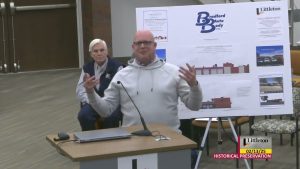A roof leak is a serious problem that can cause significant damage to your property and health. The moisture from a roof leak can create the perfect conditions for mold growth, which can lead to health hazards such as respiratory problems and allergies. Mold can also result in costly property damage and decrease the value of your home.
It’s crucial to prevent mold after a roof leak and control its spread. This can be achieved by following effective strategies and tips that we’ll explore in this article.
Identify and Fix the Leak
The first step in preventing mold growth after a roof leak is to identify and fix the source of the leak. If left unattended, a leaky roof can cause significant water damage to your property and lead to the growth of mold.
Some signs of a roof leak include water stains on your ceiling or walls, peeling paint or wallpaper, and visible water damage on your roof. If you suspect a leak, it’s important to act quickly to prevent further damage and potential mold growth.
How to fix a roof leak
While some small leaks can be fixed by homeowners, it’s often best to hire a professional roofing contractor to repair your roof. A qualified contractor can ensure that the problem is properly diagnosed and repaired, reducing the risk of future water damage or mold growth.
Here are some common steps that a roofing contractor may take to fix a roof leak:
| Step | Explanation |
|---|---|
| Inspect the roof | A contractor will inspect your roof to locate the source of the leak. This may involve climbing onto your roof to visually inspect the shingles or other roofing materials. |
| Repair or replace damaged materials | Once the source of the leak is identified, a contractor will repair or replace any damaged roofing materials, such as shingles, flashing, or underlayment. |
| Seal the leak | Once all damaged materials have been replaced, a contractor will seal the area around the leak to prevent further water damage. |
| Test the repair | Before leaving, a contractor will test the repair to ensure that the leak has been properly fixed. |
By identifying and fixing a roof leak as soon as possible, you can prevent further water damage to your property and reduce the risk of mold growth.
Section 3: Dry and Clean the Affected Area
After identifying and fixing the source of the leak, the next step in preventing mold after a roof leak is to dry and clean the affected area. Mold can grow quickly in moist environments, and even a small amount of water can be enough to trigger mold growth. Therefore, it is essential to quickly dry the affected area to prevent mold from taking hold.
To effectively dry the area, it is important to eliminate any remaining moisture. This can be achieved through various drying techniques, including air circulation and the use of dehumidifiers. Proper ventilation can also play a significant role in preventing mold growth.
| Moisture Control Strategies: | Cleaning Techniques: |
|---|---|
|
|
Certain materials, such as drywall, may need to be removed and replaced to prevent the growth of mold. It is essential to thoroughly clean and dry the area before replacing any materials to prevent the spread of mold spores.
By following these drying and cleaning techniques, homeowners can effectively prevent mold growth after a roof leak. It is important to act quickly to prevent the spread of mold and potential health hazards.
Use Mold-Resistant Materials
When remodeling or repairing a home after a roof leak, it’s essential to use mold-resistant materials to prevent future mold growth. Mold-resistant products are designed to resist mold growth and can be found in various building materials, including drywall, insulation, and paint.
One of the most effective mold-resistant materials is drywall with a moisture-resistant gypsum core. This type of drywall is designed to resist moisture and inhibit the growth of mold and mildew.
| Building Material | Mold-Resistant Option |
|---|---|
| Insulation | Cellulose and foam insulation treated with fungicide |
| Paint | Paint containing mold inhibitors or fungicides |
| Wood | Pressure-treated wood or wood coated with mold-resistant sealants |
When selecting building materials for your home, look for products specifically designed to inhibit mold growth. Investing in mold-resistant materials now can save you time and money on future mold remediation efforts.
Additional Tips:
- Use moisture-resistant materials in high humidity areas, such as bathrooms and basements.
- Replace any mold-contaminated materials immediately with mold-resistant options.
- Consider consulting with a professional contractor or builder to ensure the use of proper mold-resistant materials.
Increase Ventilation
Proper ventilation is key to preventing mold growth in your home after a roof leak. Without proper air circulation, moisture can build up and create the perfect environment for mold to grow.
Benefits of Air Circulation
Increasing air circulation helps to reduce moisture in the air and prevent mold growth. Here are some benefits of proper ventilation:
- Decreases humidity levels
- Reduces condensation on windows and walls
- Improves indoor air quality
- Helps dry out damp areas
Ways to Increase Ventilation
There are several ways to improve ventilation and prevent mold growth in your home:
- Install ventilation systems like exhaust fans in bathrooms and kitchens.
- Open windows and doors to allow fresh air to circulate throughout the house.
- Use air conditioning or dehumidifiers to reduce humidity levels.
- Avoid overfilling closets or storage spaces to allow for air flow.
By increasing ventilation, you can help prevent mold growth and improve the overall air quality in your home.
Monitor Humidity Levels
Controlling humidity levels is essential for mold prevention and is especially important after a roof leak. High humidity provides an optimal environment for mold growth, making it crucial to monitor and control humidity levels in your home.
One of the easiest ways to monitor humidity levels is by using a moisture meter. These devices can help you detect areas of your home with high humidity, which can then be addressed using targeted moisture control techniques.
| Humidity Levels | Recommended Actions |
|---|---|
| Below 60% | No action required |
| Between 60-70% | Increase ventilation, use dehumidifiers if necessary |
| Above 70% | Take immediate action to reduce humidity levels |
If your home has persistent humidity issues, it may be necessary to install a ventilation system. Proper air circulation can help to reduce humidity levels and prevent mold growth. Additionally, using a dehumidifier can be an effective way to control humidity levels in specific areas of your home.
Remember that controlling humidity levels is an ongoing process and requires regular monitoring to ensure continued success in preventing mold growth.
Conduct Regular Inspections
Regular inspections are essential to prevent mold growth after a roof leak. By conducting preventative maintenance and roof maintenance, potential leaks and water damage can be caught before they become major problems. It is important to schedule inspections at least once a year, especially after severe weather events or if the roof is old.
During inspections, check for any signs of water damage, such as discoloration or warping on walls or ceilings. Look for any missing or damaged roof tiles or shingles. Check the condition of gutters and downspouts to ensure proper water flow.
It is also recommended to schedule mold inspections regularly, especially if the home has a history of leaks or water damage. Professional mold inspections can identify any hidden mold growth and provide recommendations for preventing future growth.
When to Conduct an Inspection:
To ensure mold prevention, homeowners should consider the following recommended inspection schedule:
| Inspection Type | Frequency |
|---|---|
| Roof Inspection | Annually |
| Gutter and Downspout Inspection | Bi-annually |
| Mold Inspection | Every 2-3 years, or as recommended by a professional |
By conducting regular inspections and taking immediate action when needed, homeowners can prevent mold growth and maintain a healthy living environment.
Take Immediate Action
If you discover mold after a roof leak, it’s important to take immediate action to prevent further damage. Mold can cause health hazards and property damage if left unchecked, so it’s crucial to act quickly.
Professional remediation services can help with mold cleanup and prevention. Mold cleanup should be done by professionals to avoid spreading mold spores and causing further contamination. They have the right equipment and expertise to handle mold growth safely and effectively.
Keep Gutters and Downspouts Clean
Gutters and downspouts play a crucial role in preventing water damage and mold growth. When they become clogged or damaged, water can overflow and seep into the foundation and walls of a home, creating the perfect environment for mold to thrive. That’s why it’s essential to keep them clean and properly maintained to avoid water damage and mold growth.
A schedule of regular gutter maintenance and downspout cleaning is crucial to prevent clogs and overflow. Leaves, branches, and debris should be cleaned from gutters and downspouts at least twice a year, depending on the climate. If the area around the house is heavily wooded, it may require more frequent cleaning.
| Steps to keep gutters and downspouts clean: |
|---|
| 1. Wear gloves and use a ladder to access the gutters and downspouts safely. |
| 2. Remove large debris and leaves by hand or use a scoop or gutter cleaning tool. |
| 3. Flush the gutters and downspouts with a garden hose to remove remaining dirt and debris. |
| 4. Check for any damage, such as holes or cracks, and repair as needed. |
| 5. Install gutter guards to prevent large debris from accumulating in the gutters. |
By keeping gutters and downspouts clean and well-maintained, homeowners can prevent water damage and mold growth and avoid costly repairs.
Dispose of Wet or Damaged Materials
Proper disposal of wet or damaged materials is essential in preventing mold spores from spreading and contaminating other areas of the home. When disposing of materials, it is important to take precautions to avoid exposure to mold spores.
Here are some tips for disposing of wet or damaged materials:
- Wear protective gloves, goggles, and a mask to avoid inhaling mold spores.
- Double bag any wet or damaged materials in heavy-duty plastic bags.
- Seal the bags tightly before placing them in a covered dumpster or hauling them away.
- Avoid transporting wet or damaged materials in your own vehicle to prevent cross-contamination.
If you are unsure how to properly dispose of certain materials, it is best to consult with a professional mold remediation service.
Use Professional Drying Services
After a roof leak, it is important to dry and clean the affected area to prevent mold growth. While it may be tempting to handle the drying process on your own, professional drying services may be the best option for preventing the spread of mold spores.
Professional drying services use specialized equipment and techniques to remove water and moisture from the affected area. This may include water extraction, dehumidification, and air circulation. Professional drying services can also help to identify hidden pockets of moisture that may not be immediately visible.
While professional drying services may involve an additional cost, it can be worth it in the long run to prevent mold growth and potential health hazards.
Maintain Proper Home Insurance
It is essential to maintain proper home insurance to cover potential costs associated with mold growth and water damage. In some cases, mold remediation can be costly and may not be covered by insurance policies. Therefore, it is important to review your current insurance policies thoroughly and consider adding mold coverage to your policy.
Home insurance policies typically cover water damage caused by sudden and accidental incidents such as burst pipes or storms. However, they may not cover water damage caused by maintenance issues or neglected repairs. Therefore, it is important to be proactive in addressing any maintenance issues to prevent water damage and mold growth.
If you discover mold in your home, it is crucial to contact your insurance provider immediately. They may send out an adjuster to assess the damage and determine coverage.
It is crucial to read your policy carefully and understand the coverage in detail. Some policies may have exclusions or limitations that may impact your coverage. For example, some policies may have a cap on the coverage amount, or they may exclude certain types of mold.
It is also important to keep your insurance policy up to date. Changes to your home or personal circumstances may impact your coverage. Therefore, it is important to review your policy regularly and update it as necessary.
FAQ
Q: What are some effective strategies for preventing mold growth after a roof leak?
A: Some effective strategies include identifying and fixing the leak as soon as possible, drying and cleaning the affected area, using mold-resistant materials, increasing ventilation, monitoring humidity levels, conducting regular inspections, taking immediate action when mold is discovered, and keeping gutters and downspouts clean.
Q: Why is it important to fix a roof leak before it causes water damage and mold growth?
A: If left unrepaired, roof leaks can cause significant water damage to your property. This can lead to the growth of mold and other harmful bacteria, which can cause health hazards and damage to the structure of your home.
Q: What are some effective methods for drying and cleaning the affected area after a roof leak?
A: Effective methods for drying and cleaning the affected area may include using dehumidifiers, fans, and moisture meters to control humidity levels. Using cleaning products specifically designed for mold remediation can also be helpful.
Q: How can homeowners increase ventilation in their homes to prevent mold growth?
A: Homeowners can increase ventilation by installing ventilation systems, opening windows, and using air conditioning units. Proper air circulation can help prevent moisture buildup and promote a healthy living environment.
Q: What should homeowners do if they discover mold in their home?
A: Homeowners should take immediate action and hire professional remediation services to avoid potential health hazards and property damage. It is important to properly identify the source of the mold, remove contaminated materials, and take steps to prevent future growth.
Q: Why is it important to maintain proper home insurance to cover potential costs associated with mold growth and water damage?
A: Proper home insurance can help cover the costs associated with water damage and mold remediation. Homeowners should review their current insurance policies and consider adding mold coverage to ensure they are protected in the event of a mold-related issue.
Q: When should homeowners conduct regular inspections to prevent mold growth?
A: Homeowners should conduct regular inspections, including preventative maintenance and roof maintenance, to catch potential leaks and water damage before they become major problems. It is recommended to have a professional inspection at least once a year.
Q: What should homeowners do with wet or damaged materials to prevent the spread of mold spores?
A: Homeowners should dispose of wet or damaged materials properly to prevent mold spores from spreading. This may require using specific disposal methods, such as sealing the materials in plastic bags and removing them from the home immediately.
Q: Should homeowners consider using professional drying services to prevent mold growth?
A: Yes, homeowners may want to consider using professional drying services to prevent further water damage and mold growth after a roof leak. Professional water extraction and drying techniques can prevent the spread of mold spores and help restore the affected area to its original condition.










